

The Nikon D810 full frame camera in microscopy
The Nikon D810 follows its predecessor models exceptionally fast – this replacement to the Nikon D800 was introduced to the market after only two years. The interesting question now is whether there are any significant differences between the two models that have implications for our specialist area of application: microscopy. Our test will provide the answer to this question!
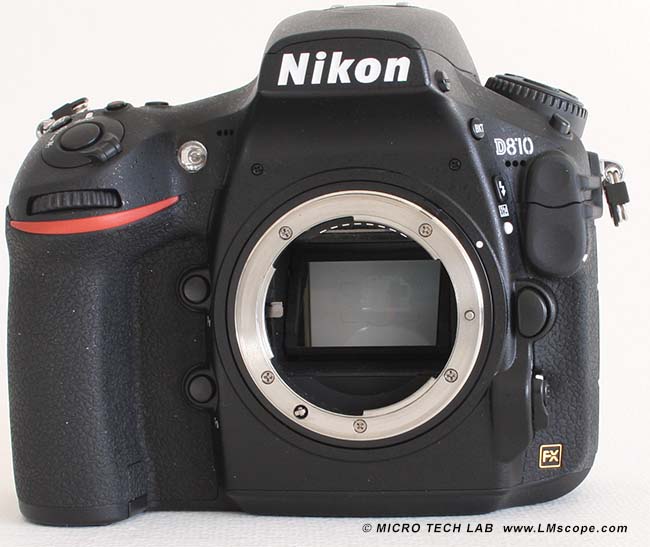
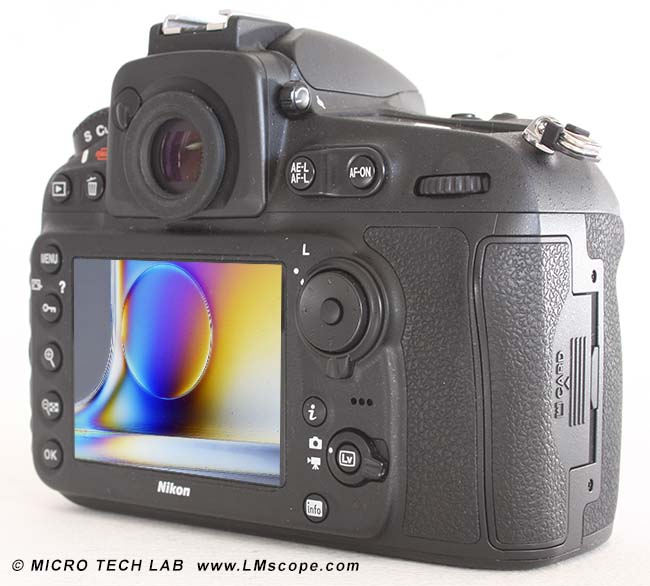
In terms of external appearance, the Nikon D810 is no different from the Nikon D800. You have to look very closely to notice slight differences in the way some of the operating controls are arranged. The screen has been improved: size and functions (unfortunately, it is still not movable) have remained the same, but the resolution has been increased. This is most noticeable in Live View mode and in very bright sunlight (unfortunately, this is rarely the case when working in the laboratory). A split-screen feature has been added to the Live View mode, which displays magnified areas of the left and right sides of the Live View frame, thus enabling more precise focus adjustments. To be honest, we haven’t used this feature, as we were better off using the magnifying function for focusing. The camera even has a dedicated magnification button.
The Nikon D810 boasts an impressive 36 megapixels – currently the highest pixel number – with a colour depth of 36 bits. ISO sensitivity can be set at anywhere between ISO 64 and ISO 12,800 and can even be expanded to a range of ISO 32 to ISO 51,200. Like its predecessor, the Nikon D800, the Nikon D810 does not have a deep pass filter, which has a positive impact on the camera’s resolution quality.
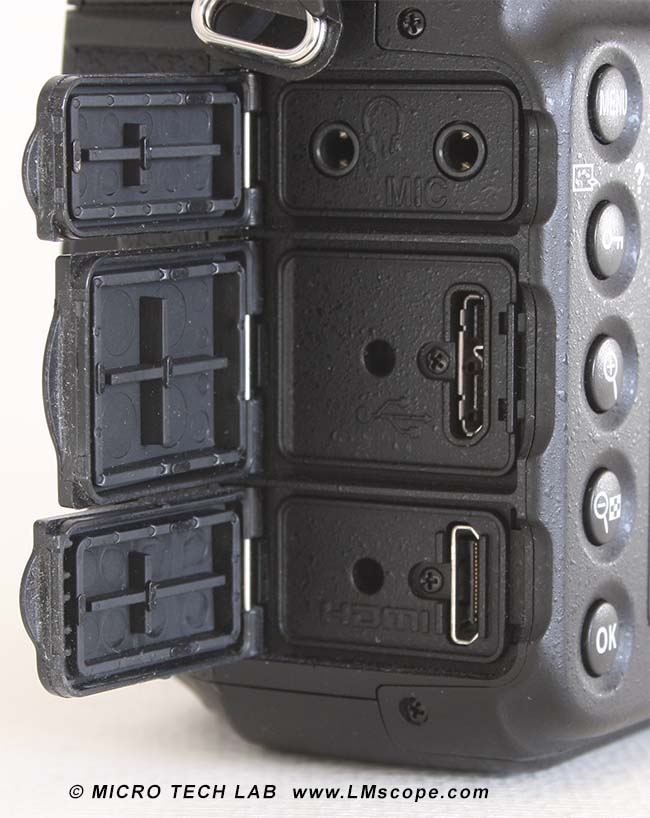
Of course, the Nikon D810 also has an HDMI connection, which can be used to display an uncompressed Live View output on an external monitor (the image quality is extremely high). In addition, it features a USB3 connection for exceptionally fast data transfer.
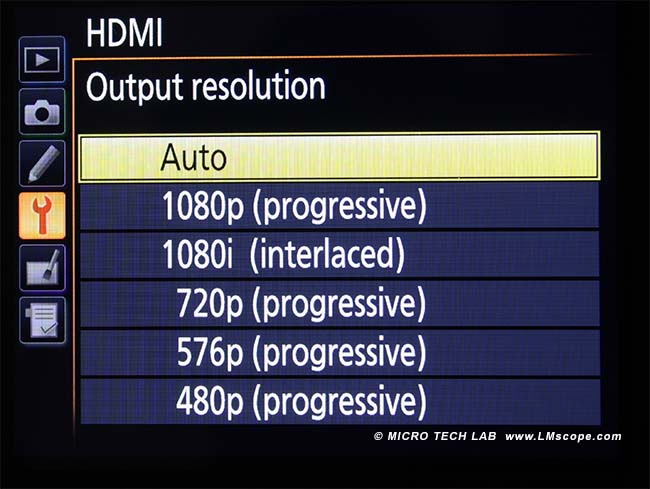
The setting options in power saving mode are very useful. For presentations and projects that require the camera to be running over an extended period of time, it is definitely a plus to have the option of disabling auto shut-off of the display in order to stay in continuous operation.
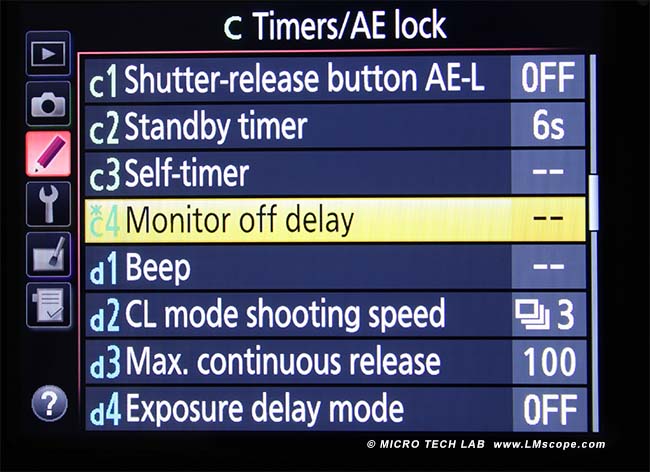
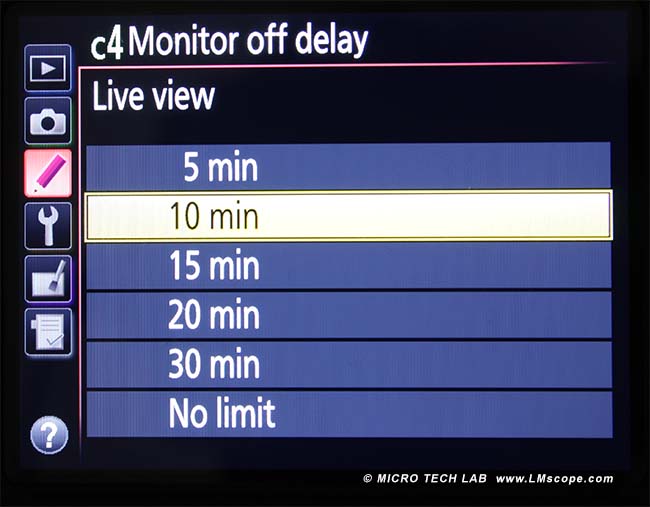
The low vibration shutter mechanism is another improvement. The mechanical shutter virtually eliminates all vibration, thereby reducing camera blur.
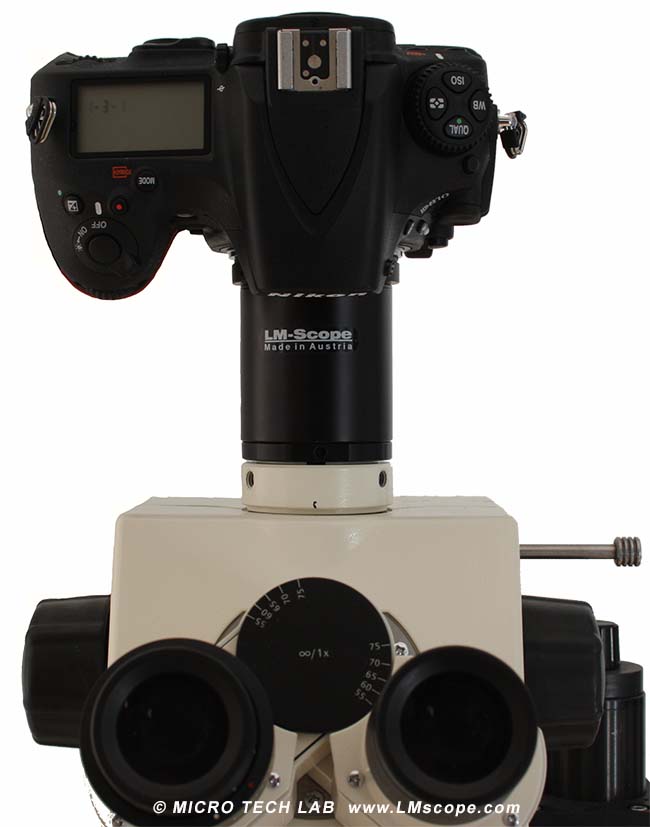
The Nikon D810 also delivers an impressive performance on the microscope – in our case, a Zeiss Axio Imager with ergo tube. We attached the camera to the microscope using a special adapter which features a particularly short, compact design and was developed especially for Zeiss microscopes. The quality of the microscope images is extremely high. Particularly at low magnifications, the Nikon D810 really shows what it has got.
We are definitely impressed by the Nikon D810, and did not want to put it down after we were done with our test, even though, at 880 grams (and that’s only its body) it is pretty heavy! Although we are very pleased with it, there is one respect in which it does not outperform its competitor models: it is not capable of recording 4k video frames.
Like all Nikon cameras, the D810 can be controlled via the reliable Camera Control Pro 2 software. Particularly in studio and laboratory applications, this is a major advantage, because the camera can be efficiently controlled from a PC and the Live View image can be checked and captured on the large computer screen. This was the first time that we had to update the software, as the camera no longer recognised older versions of Camera Control Pro 2.
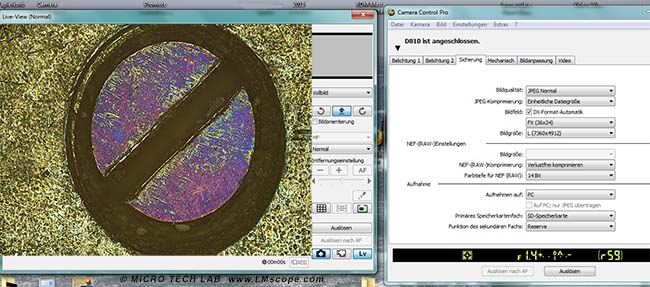
All camera settings can be controlled remotely via PC, such as video quality:
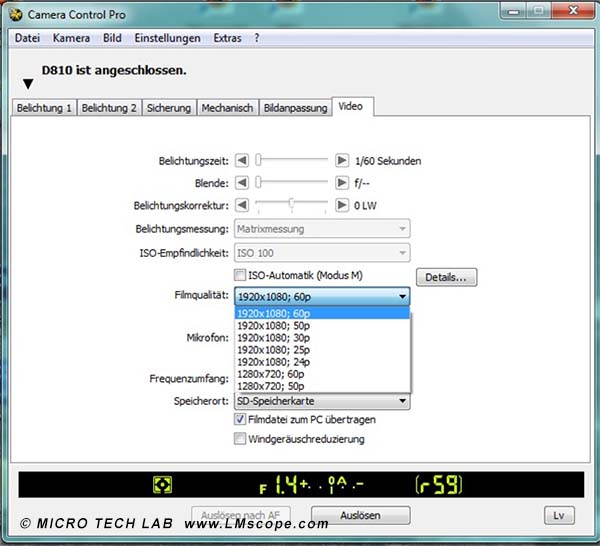
ISO-Setting:
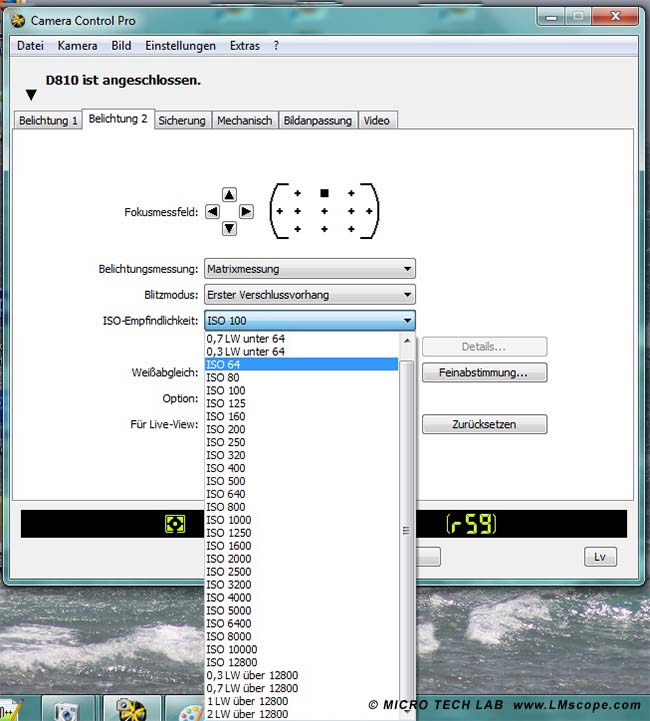
Image format:
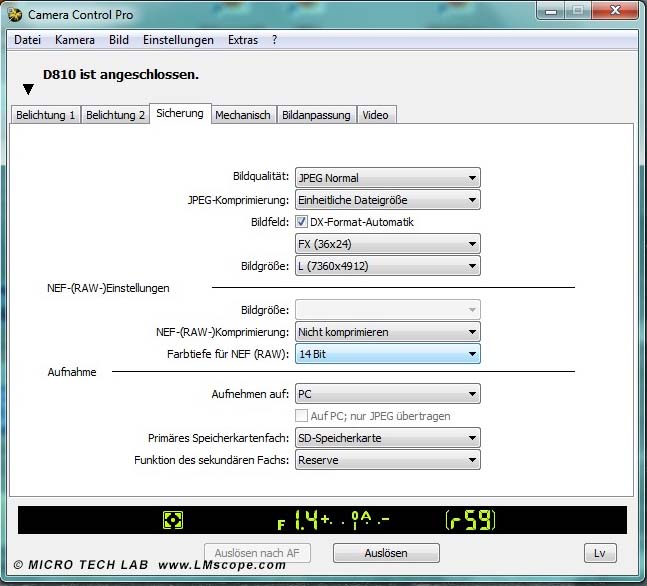
Colour space, HDR:
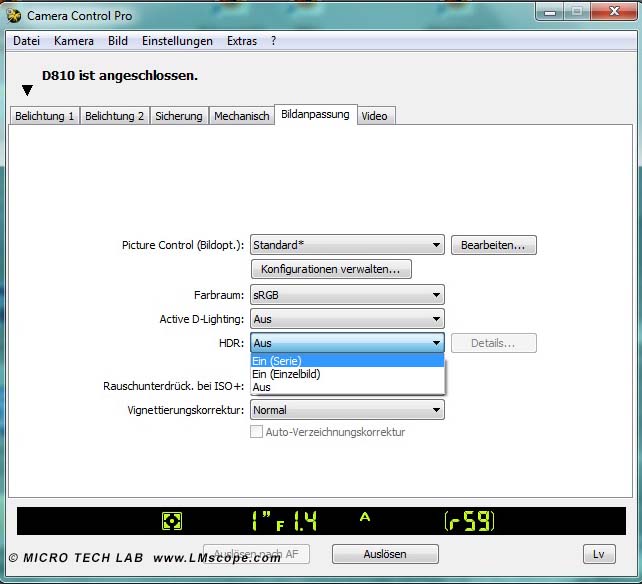
Conclusion:
The Nikon D810 has a really good sensor, a very quiet shutter, and the power saving mode can be disabled. The camera therefore offers pretty much everything that is important for microscopy applications. Anyone who has the money available should seriously consider buying this camera.
14.04.2015
New LM Digital Adapter for: Nikon Z8 / Nikon D6 / Nikon Z6III / Nikon Z6 / Nikon Z6II / Nikon Z7 / Nikon Z7II / Nikon Z5 / Nikon Z50 II / Nikon Z50 / Nikon Z30 / Nikon Z fc / Nikon D850 / Nikon D780 / Nikon D5 / Nikon D4s / Nikon D4 / Nikon D750 / Nikon D500 / Nikon D810 / Nikon D800 / Nikon D800E / Nikon Df / Nikon D610 / Nikon D600 / Nikon D7200 / Nikon DS-Qi2 (Microscope Camera) / Nikon D3x / Nikon D3S / Nikon D7100 / Nikon D7000 / Nikon DS-Ri2 (Microscope Camera) / Nikon D7500 / Nikon D700 / Nikon D3 / Nikon D5500 / Nikon D5200 / Nikon D5300 / Nikon D300 / Nikon D3500 /